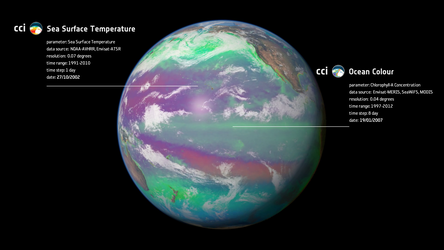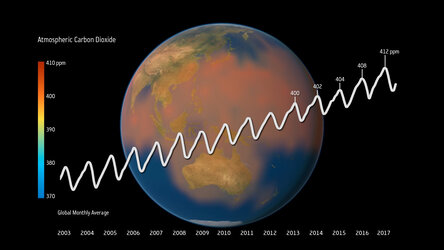
Changing lands
Land-cover maps break down the different types of material on Earth’s surface, such as bodies of water, ice cover, crops, forests, grasslands and artificial surfaces. This information is important for monitoring changes in land use, conserving biodiversity, managing natural resources and understanding climate change. The animation shows how satellite data and ESA’s Climate Change Initiative are mapping land cover around the globe. As well as showing how vegetation changes with the season, these maps are updated every year to show how land cover is changing in the longer term. For example, zooming in on Brazil’s state of Mato Grosso, we can see how land taken for growing crops dramatically increased between 1995 and 2015. Urban sprawl in Shanghai, China, is also mapped over the same period.
In April 2017, the Climate Change Initiative Land Cover Team announced the release of the first time series of annual global maps spanning 1992–2015. These can be downloaded from the land cover website. The project continues to build a wide and dynamic community from international companies to non-profit organisations. A prototype map of Africa was also released in September 2017, and has already been downloaded 1000 times and viewed 17 000 times, indicating that there is a lot of interest in tracking change over this part of the world.






